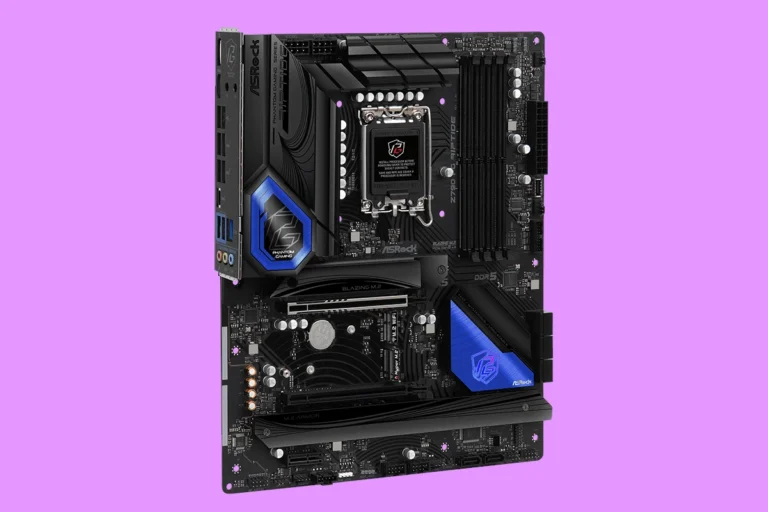
When buying a new phone, TV, or laptop, you’ll often face the decision about getting an extended warranty. Many people think these warranties are just ways for stores to make extra money. Extended warranties can sometimes save you significant money, especially for expensive electronics that are prone to damage or failure after the manufacturer’s warranty expires.
Most manufacturer warranties cover very limited issues and only last for about a year. They typically don’t cover accidents, water damage, or normal wear and tear. Extended warranties often fill these gaps, but they’re not always necessary for every purchase.
The biggest misconception is that all extended warranties are the same. Some cover accidental damage while others only extend the original warranty terms. Before deciding, consider the product’s reliability, your usage habits, and replacement costs.
Common Myths About Extended Warranties for Electronics (and the Real Truth)
When you buy a new phone, laptop, or TV, you’re often asked at checkout: “Would you like to add an extended warranty?”
It sounds like a smart safety net — but is it really worth it?
Extended warranties (also called “protection plans” or “service contracts”) can be helpful in some cases, but they’re also surrounded by misconceptions that lead many consumers to waste money or misunderstand what they’re buying.
Let’s separate myth from fact and help you make smarter decisions the next time you’re offered an extended warranty.
💭 Myth #1: “An Extended Warranty Is the Same as a Manufacturer’s Warranty”
The Truth:
A manufacturer’s warranty is included for free and covers defects in materials or workmanship for a limited time (usually one year).
An extended warranty, on the other hand, is a separate paid service that kicks in after the manufacturer’s warranty expires — and often comes with different coverage terms.
👉 Tip: Always read what’s covered and what’s excluded. Many extended warranties don’t include accidental damage, battery wear, or normal use issues unless you pay extra.
💸 Myth #2: “Extended Warranties Always Save You Money”
The Truth:
In many cases, extended warranties cost more than the repairs they cover.
According to PCMag, most electronics either fail during the manufacturer’s warranty period or last well beyond it — meaning you may never use the plan.
👉 Example: Paying $200 for a 3‑year laptop warranty might not make sense if the average repair cost is $150 and the laptop is likely to be replaced within that time.
🧾 Myth #3: “All Damage Is Covered”
The Truth:
Extended warranties often exclude accidental damage, water damage, or software issues unless you buy a premium plan.
Some only cover hardware defects, not user error or physical damage.
👉 Tip: If you’re worried about drops or spills, look for a protection plan that includes accidental damage coverage — or consider insurance through your credit card or homeowner’s policy.
🔧 Myth #4: “You Must Buy the Warranty at the Time of Purchase”
The Truth:
While retailers encourage you to buy immediately, most extended warranties can be purchased later — sometimes up to 30–60 days after the original purchase.
This gives you time to evaluate whether the product is reliable before spending extra.
👉 Tip: Check the manufacturer’s or third‑party provider’s website for purchase deadlines and coverage options.
🧍 Myth #5: “Third‑Party Warranties Are All Scams”
The Truth:
Not all third‑party warranty providers are bad — but some are unreliable or make it difficult to file claims.
Reputable companies (like Asurion, SquareTrade, or AppleCare) have clear terms and established customer service channels. Others may have hidden fees or slow repair processes.
👉 Tip: Read reviews, check Better Business Bureau ratings, and confirm that the provider is authorized by the manufacturer before buying.
🔁 Myth #6: “Refurbished Products Don’t Have Warranties”
The Truth:
Many refurbished products do come with warranties, though they’re often shorter than for new items.
According to NobleQuote, certified refurbished electronics from major brands like Apple, Dell, and Samsung include limited warranties and the option to purchase extended coverage.
👉 Tip: Always check whether your refurbished product is “manufacturer certified” — that usually means it’s been tested, repaired, and resold with warranty eligibility.
💡 Myth #7: “Extended Warranties Are Useless”
The Truth:
Extended warranties aren’t always a waste of money. They can be valuable for:
- High‑cost items (like OLED TVs, gaming laptops, or smart appliances)
- Products with expensive or hard‑to‑find parts
- People who travel frequently or use devices in tough conditions
👉 Tip: Evaluate the cost of the plan vs. the potential repair or replacement cost — and consider how long you plan to keep the device.
✅ Key Takeaways
| Myth | Reality |
|---|---|
| Extended warranties = manufacturer warranties | They’re separate and optional |
| They always save money | Often not — most devices don’t fail post‑warranty |
| All damage is covered | Usually not — accidental damage needs extra coverage |
| Must buy immediately | You often have 30–60 days |
| Third‑party plans are scams | Some are legitimate, others aren’t |
| Refurbished items have no warranty | Many do, just shorter |
| Warranties are useless | Sometimes worthwhile for costly or fragile gear |
🧠 Final Thoughts
Extended warranties for electronics aren’t inherently good or bad — they’re simply insurance products.
The key is understanding what they cover, what they don’t, and whether the cost makes sense for your device and usage habits.
Before saying “yes” at checkout, take a moment to:
- Compare warranty prices and coverage
- Check your credit card’s built‑in protection benefits
- Read the fine print carefully
An informed decision can save you both stress and money down the road.
Key Takeaways
- Extended warranties can provide valuable coverage beyond manufacturer warranties, typically costing only 5-7% of the product’s purchase price.
- Not all electronics need extended protection, as some products rarely fail outside of manufacturer warranty periods.
- Warranty terms vary significantly between providers, with some covering accidents and others only extending original coverage periods.
Understanding Warranties
Warranties provide crucial protection for your electronics purchases, but many consumers don’t fully grasp how different types of coverage work. Understanding the distinctions can save you both money and frustration when something goes wrong with your device.
Differences Between Extended Warranty and Manufacturer’s Warranty
A manufacturer’s warranty comes included with most electronics purchases and typically covers defects in materials and workmanship for a limited time period, usually 90 days to one year from the date of purchase. This basic coverage handles manufacturing defects but often excludes accidental damage.
Extended warranties, on the other hand, kick in after the manufacturer’s warranty expires. They provide additional protection that can last several years. Despite common misconceptions, they aren’t always unnecessary—they often cover issues the manufacturer’s warranty does not, such as:
- Accidental damage protection
- Longer coverage periods
- Additional services like tech support
- Coverage for normal wear and tear
Many reputable companies offer legitimate extended warranties that can be valuable for expensive electronics or items you plan to keep long-term.
The Role of Service Contracts in Electronics
Service contracts are often confused with extended warranties but function somewhat differently. These agreements provide specific repair and maintenance services for a set period of time and cost.
Most service contracts offer benefits like:
- Regular maintenance checks
- Priority repair service
- Technical support access
- Parts replacement beyond standard warranty coverage
Service contracts typically cost around 5-7% of a product’s purchase price and can be worthwhile for complex electronics. They’re particularly valuable for items like smart home systems or high-end computers where technical assistance might be frequently needed.
The coverage details vary significantly between providers, so it’s essential to read the terms carefully. Look specifically for what’s excluded and whether the contract covers both parts and labor for repairs.
Perceived Value of Extended Warranties
Extended warranties represent a significant investment decision when purchasing electronics. Consumers often weigh potential repair costs against warranty prices while seeking the emotional security these plans promise.
Peace of Mind: Fact or Fiction?
Many consumers purchase extended warranties primarily for peace of mind rather than economic value. The psychological comfort of knowing potential repair costs are covered can reduce anxiety about expensive electronic purchases. However, this perceived benefit may not align with reality.
Research suggests that the peace of mind consumers seek might be based on an overestimation of product failure rates. The fear of unexpected repair costs often drives warranty purchases more than actual failure statistics.
Companies market extended warranties by emphasizing worst-case scenarios that trigger emotional responses. This tactic leverages consumer risk aversion.
For high-value electronics, warranties might provide genuine psychological value. The premium paid can be viewed as an “anxiety tax” that some consumers willingly accept despite statistical odds suggesting they won’t need the coverage.
Repair Costs: Expectation vs. Reality
Consumers frequently overestimate potential repair expenses when considering extended warranties. The average extended warranty for electronics costs approximately 24% of the product’s purchase price, while actual repair probabilities and costs often don’t justify this expense.
Many electronic devices that fail do so either:
- During the manufacturer’s warranty period
- After both warranties have expired
- Due to issues not covered by extended warranties
Comparison: Warranty Cost vs. Expected Repair Value
| Product Type | Avg. Warranty Cost | Probability of Repair | Expected Repair Cost |
|---|---|---|---|
| Smartphones | $120-200 | 15-20% | $150-300 |
| Laptops | $200-350 | 20-25% | $250-400 |
| TVs | $100-300 | 5-10% | $200-500 |
Self-insuring by setting aside the warranty cost in savings often proves more economical. Modern electronics have improved reliability, and when failures occur, replacement costs have decreased while repair complexity has increased.
Some consumers find better value in retailer protection plans that cover accidental damage, which manufacturer warranties typically exclude.
Financial Implications
Understanding the financial aspects of extended warranties helps consumers make informed decisions about whether these protection plans are worth the investment. Money spent on warranties should be weighed against potential repair costs and the likelihood of needing repairs.
Analyzing Cost-Effectiveness of Extended Warranties
Extended warranties typically cost between 10% to 20% of the product’s price. For a $1,000 laptop, this means paying an additional $100-$200 for protection that may never be used. Many extended warranties don’t cover common issues like accidental damage or normal wear and tear.
Consumer Reports studies show that most electronics don’t break within the warranty period. When they do malfunction, the repair cost is often similar to what was paid for the warranty.
A better financial strategy might be creating a personal “repair fund” by setting aside the money you would have spent on warranties. This self-insurance approach works especially well if you own multiple electronics.
The True Cost of a Costly Repair Bill
Unexpected repair bills can be significant. A smartphone screen replacement costs $150-$300, while laptop motherboard repairs can exceed $500.
However, statistics reveal that only 1 in 5 electronics requires major repair during the period an extended warranty would cover. Modern electronics are increasingly reliable, with failure rates declining yearly.
When evaluating potential repair costs, consider:
- The device’s original price
- Replacement cost versus repair expense
- Repair frequency for that specific brand/model
- Technological obsolescence timeline
Many credit cards also provide free extended warranty protection for purchases, making paid warranties redundant coverage in many cases.
Potential Savings: Warranty vs. Out-of-Pocket Repairs
While extended warranties can save money in certain situations, the numbers often favor skipping them. Consumer advocates calculate that companies wouldn’t offer warranties if they weren’t profitable business models.
For high-end electronics with expensive components, warranties might make sense. Example: A $2,500 OLED TV with a $250 warranty could save money on the $700 panel replacement.
Cost-Benefit Analysis:
| Scenario | With Warranty | Without Warranty |
|---|---|---|
| No repairs needed | Loss of warranty cost | No additional costs |
| Minor repair needed | Covered (minus deductible) | Small repair bill |
| Major repair needed | Covered (minus deductible) | Large repair bill |
The key is probability assessment – most electronics won’t require major repairs during the extended warranty period, making warranties frequently cost more than they save.
Industry-Specific Warranty Insights
Different industries approach warranties with unique terms and coverage options that consumers should understand before making decisions. Knowing how warranties work across electronics, automotive, and major tech companies can help you make smarter choices about protection plans.
Electronics: Beyond the Manufacturer Warranty
Most electronic devices come with a standard manufacturer warranty that typically covers defects for 90 days to one year. However, these basic warranties often exclude common issues like accidental damage, water damage, and normal wear and tear.
Extended warranties for electronics cost about 24% of the product’s price on average, according to research. Consumers purchase these warranties for approximately 20% of their electronic purchases.
When shopping for extended protection, look beyond the retailer’s offering. Third-party warranty providers often offer more comprehensive coverage at competitive prices.
Key considerations for electronics warranties:
- Battery failures (rarely covered after 1 year)
- Software issues (coverage varies widely)
- Shipping costs for repairs (often hidden fees)
- Replacement vs. repair policies
Automotive: Understanding Car Warranty Intricacies
Car warranties differ significantly from electronics coverage, with several distinct types available. The factory warranty typically includes a bumper-to-bumper warranty (3-5 years) and a powertrain warranty (5-10 years).
Extended car warranties come in two main forms:
- Manufacturer-backed – purchased through dealerships
- Third-party warranties – often more flexible but with varying reliability
Many consumers don’t realize that extended service contracts are available from sources beyond the manufacturer. These alternatives may offer better value and more customization options.
Vehicle warranties often contain exclusions in fine print. Regular maintenance requirements must be followed exactly, or the warranty could be voided. Keep meticulous records of all service to protect your coverage.
Tech Giants: Apple and Intel’s Approach to Warranties
Apple offers a standard one-year limited warranty on most products, with 90 days of complimentary support. Their AppleCare+ extends this coverage and adds accidental damage protection, though with service fees for each incident.
Apple warranty highlights:
- Two incidents of accidental damage every 12 months
- Battery service if capacity drops below 80%
- Express replacement service
- Global repair coverage
Intel takes a different approach with processors, offering warranties based on whether the chip is boxed (3 years) or OEM (typically 1 year). Their warranty specifically covers the processor functioning to specification, not overclocking issues.
Both companies have moved away from common warranty myths by providing clear terms. However, consumers should note that software issues and data loss typically remain excluded from coverage.
Myths vs. Facts
Let’s separate fact from fiction when it comes to extended warranties for electronics. Many consumers make decisions based on misconceptions that could cost them money or leave their devices unprotected.
Extended Warranties Are Always Necessary
Many retailers push extended warranties at checkout, creating the impression they’re essential. However, extended warranties aren’t always necessary for every purchase.
Most electronics already come with manufacturer warranties covering defects for 6-12 months. This coverage often addresses the most likely failure period for new products.
For inexpensive items under $100, the extended warranty might cost nearly as much as replacing the item itself.
Consider the reliability of the brand and product before purchasing additional coverage. High-quality brands with good reliability ratings may not require extended protection.
A better alternative is to save the money you would spend on warranties in a dedicated “repair fund” for when something actually breaks.
Extended Warranties Are a Form of Insurance
Despite common belief, extended warranties are not technically insurance products. They function differently in important ways.
Extended warranties are service contracts that extend the manufacturer’s warranty period. Unlike insurance, they typically don’t cover accidents, theft, or loss—only mechanical failure or defects.
Insurance products are regulated by state insurance departments and provide broader protection against various risks. Extended warranties have different regulatory oversight.
Many credit cards automatically provide extended warranty protection on purchases, doubling the manufacturer’s warranty up to an additional year for free.
Before purchasing extended coverage, check your credit card benefits to avoid paying for protection you already have.
Extended Warranty Companies Like SquareTrade and Protect Your Bubble Offer Superior Coverage
Third-party warranty providers like SquareTrade and Protect Your Bubble often market themselves as offering better coverage than retailer warranties. This isn’t always true.
These companies may offer competitive pricing, but their coverage terms can be similar to retailer-offered plans. The main difference often lies in the claims process rather than coverage terms.
Some advantages of third-party warranties include:
- Potentially lower prices
- Coverage across multiple retailers
- No sales pressure at checkout
However, third-party claims might require more documentation and longer processing times. Some trustworthy companies offer genuine extended warranties that provide valuable protection, but terms vary widely.
Always read the fine print carefully before assuming any warranty is superior.
All Extended Warranties Cover Normal Wear and Tear
One of the biggest misconceptions is that extended warranties cover normal wear and tear. Most don’t.
Extended warranties typically only cover mechanical failures and manufacturing defects—not problems arising from regular use. Items that naturally degrade over time, like batteries losing capacity, are usually excluded.
Key exclusions often include:
- Battery deterioration
- Scratches and cosmetic damage
- Software issues
- User-caused damage
Many consumers discover these limitations only when filing claims. Read warranty terms carefully to understand what “normal wear and tear” exclusions mean for your specific device.
The reputation of extended warranty programs has improved, but coverage limitations remain a significant factor when evaluating their value.
Frequently Asked Questions
Extended warranties for electronics come with various nuances and considerations that many consumers misunderstand. The decision to purchase additional coverage depends on specific circumstances, product reliability, and individual risk tolerance.
Are extended warranties on electronics always a waste of money?
Extended warranties aren’t always wasteful purchases, despite common beliefs. For many consumers, they provide valuable protection beyond standard manufacturer coverage.
Trustworthy companies offer genuine extended warranties that can protect valuable investments. These plans become particularly valuable for expensive electronics or items used frequently.
The value largely depends on the specific device, its typical failure rate, and the warranty terms. High-end products with sophisticated components often benefit more from extended coverage.
What are the common misconceptions about the value of extended warranties for appliances?
A widespread misconception is that manufacturer warranties cover everything, which isn’t true. Most factory warranties have significant limitations and typically only cover manufacturing defects.
Another myth is that extended warranties don’t cover accidental damage. Many comprehensive plans actually include protection against drops, spills, and other accidents that manufacturer warranties exclude.
Some consumers believe all extended warranties are scams. While some offerings provide minimal value, many plans deliver substantial benefits when properly matched to the product and usage patterns.
How do extended warranty services differ between providers?
Coverage scope varies significantly between providers. Some only cover mechanical failures, while others include accidental damage, loss, and even theft protection.
Customer service quality differs dramatically across warranty companies. Response times, repair options, and replacement policies can make a substantial difference in the user experience.
Cost structures vary widely too. Some warranties require deductibles for each claim, while others charge only an upfront fee with no additional costs for service.
In what scenarios might an extended warranty not be necessary for electronic devices?
For inexpensive electronics under $100, the warranty cost often represents a high percentage of the item’s value. Replacing these items outright is frequently more economical than purchasing coverage.
Products with exceptionally high reliability ratings and strong manufacturer warranties might not need additional protection. Some premium brands already offer comprehensive factory coverage.
Items that become technologically obsolete quickly may not benefit from long-term warranties. Consumers typically upgrade these devices before warranty coverage would prove valuable.
Can extended warranties provide benefits besides repair and replacement cost coverage?
Many extended warranties include technical support services that help users troubleshoot problems without requiring a full repair. This convenience saves time and frustration.
Some plans offer proactive maintenance services that can extend device lifespan. Regular cleaning and optimization keep electronics running efficiently.
Certain warranties provide additional perks like data recovery services, loaner devices during repairs, or expedited shipping options for maximum convenience.
What factors should be considered before purchasing an extended warranty for electronics?
The device’s price point should influence the decision. Higher-value electronics generally justify additional protection due to their significant replacement cost.
Reliability history of both the product model and brand matters. Devices with known issues or from manufacturers with spotty reliability records may benefit more from extended coverage.
Personal usage patterns play a crucial role. Those who travel frequently with their devices or use them in challenging environments face higher risk of damage and might gain more from extended protection.






